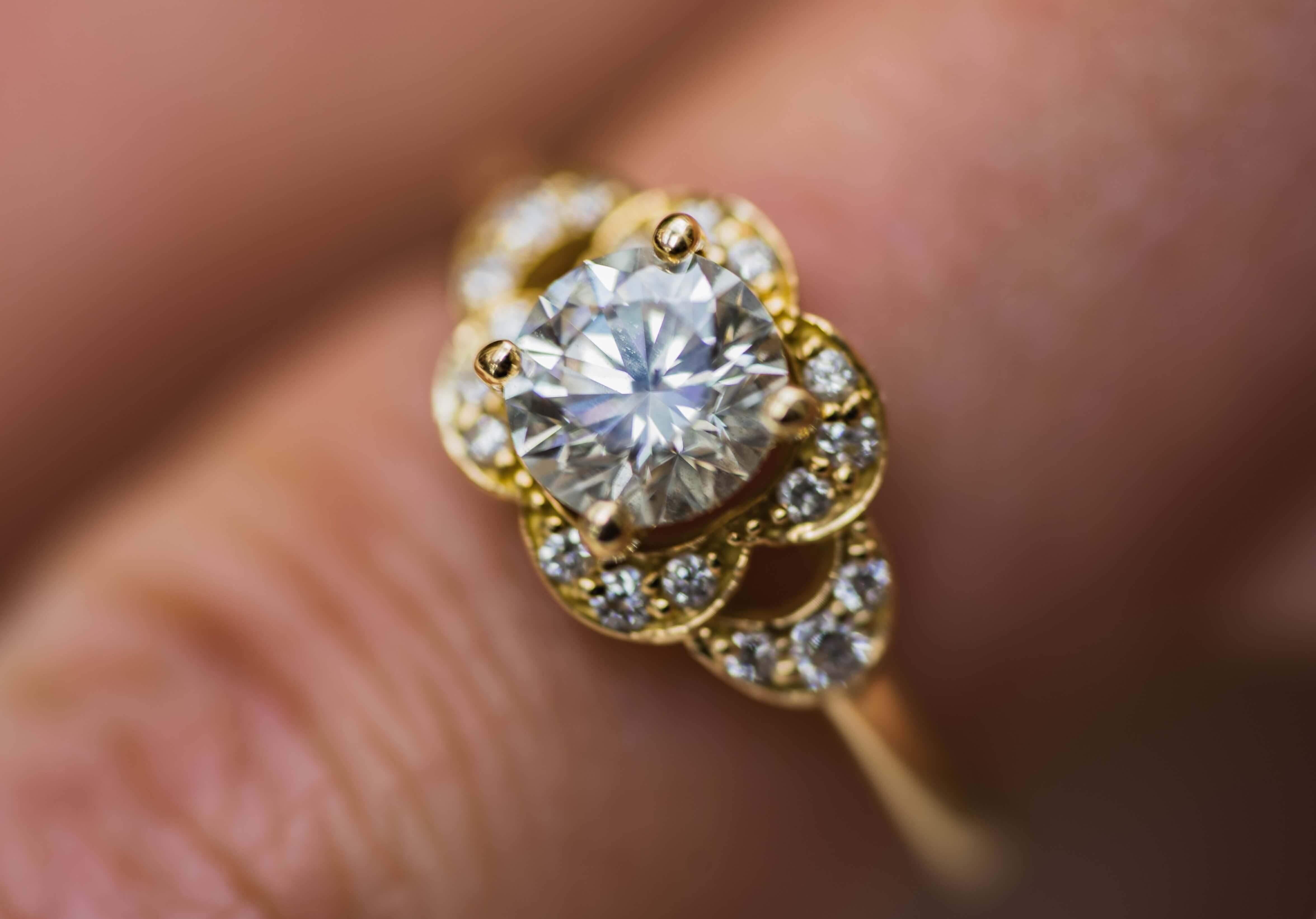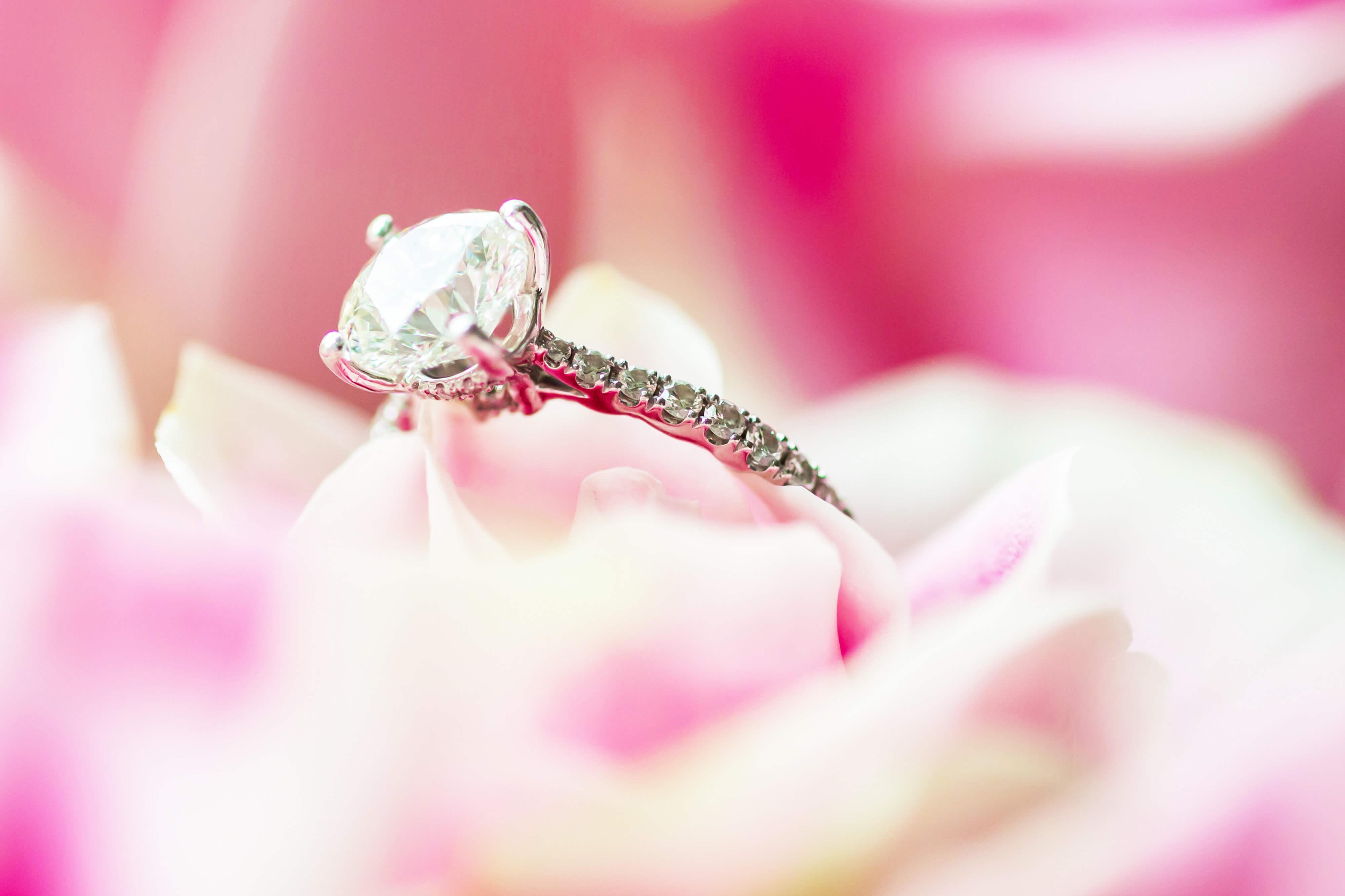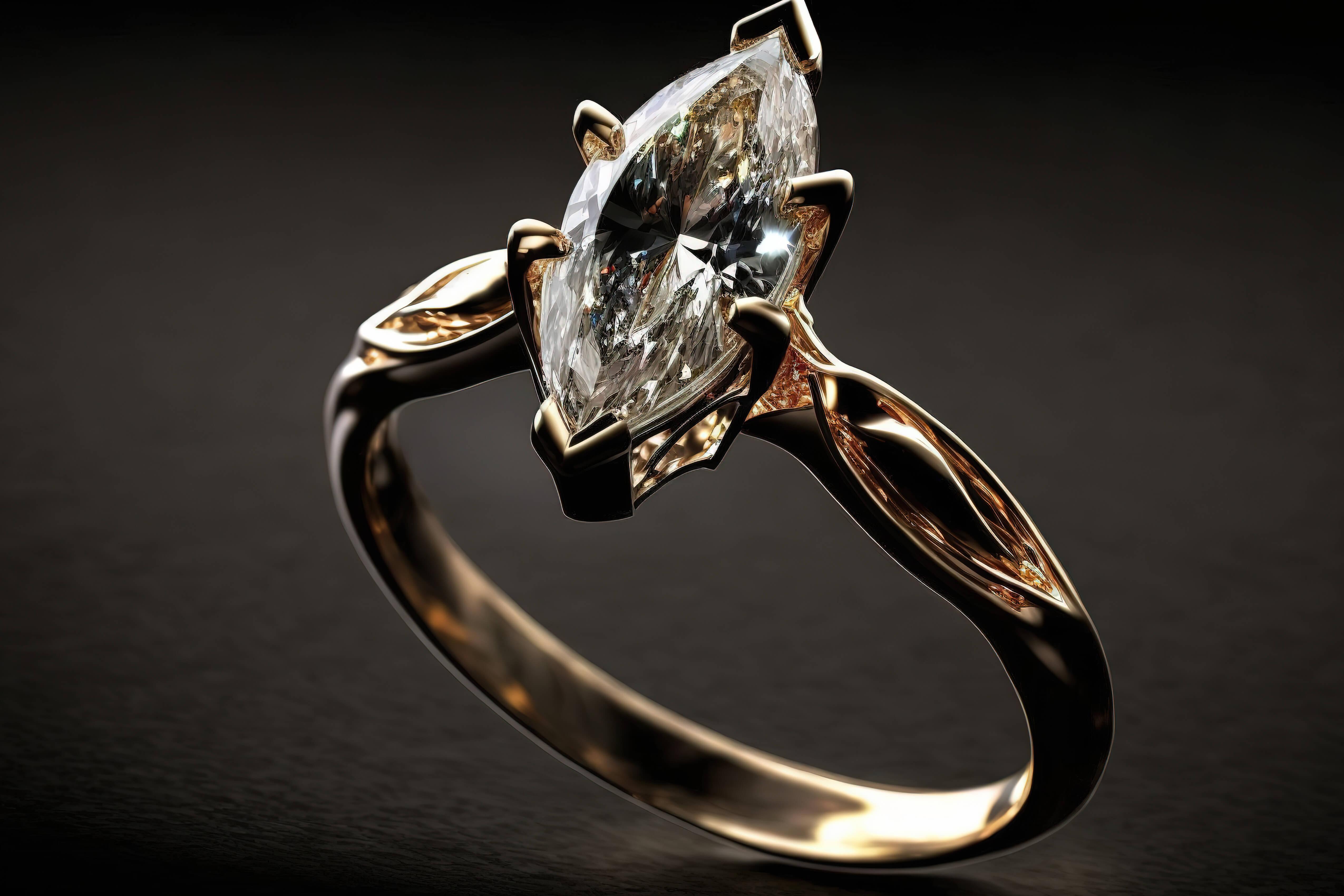
What To Know Before You Buy Pave Set Jewelry
Diamond jewelry exploded in popularity during the 20th century and shows no signs of slowing down anytime in the 21st.
Adored for their unparalleled combination of sparkling scintillation, glimmering fire and stark brilliance, diamonds are more than just “a girl’s best friend,” as Marylin Monroe would have us believe.
Beyond the unmistakable beauty of a magnificent center stone, diamond accents can invest otherwise negative space with light, be used for striking designs that glitter with intensity, and create illusions of illumination.
One of the most popular and accessible styles of diamond accenting is known as Pave, which is the subject of this article.
The questions in this article we intend to answer include:
What is Pave?
Are Pave Diamonds Real?
Are Pave Diamonds/Melee Stones Diamond Chips?
Who Chooses Pave?
Why Choose Pave?
Are Pave Settings Expensive?
What Are The Best Shapes for Melee Diamonds?
What Are The Different Types of Pave Settings?
How Much Pave Should You Have On An Engagement Ring?
Where Can You Buy Pave Set Jewelry and Engagement Rings?
How Do You Take Care of Pave Settings?
Are Pave Diamonds Graded The Same As Larger Diamonds?
Does A Pave Setting Need To Match Your Center Stone?
How Secure Are Pave Settings?
So let’s dive into some of the frequently asked questions about the many facets (pun intended) of pave, and what it can be, or do, for you.
Please Read This Important Note:
There is no standardization in the diamond industry for most of the terms we are using in this article, and as a result, there may be a variation between how we define something here versus another source. This article represents how we use these terms at Michael Gabriels and among our associate artisans and the professionals we work with.
What is Pave?
Pave is the name applied to a variety of jewelry setting styles that use multiple melee diamonds set closely together.
Melee diamonds are very small, real diamonds, that are faceted and polished just as much as larger diamonds.
While melee diamonds are used for many kinds of accents and details, when they are grouped together in lines or large clusters, the resulting settings are largely referred to as “pave.”
Therefore, while the terms “pave diamond ring,” and “pave engagement ring,” are technically correct, there is no such thing as “pave diamonds,” since that is a misnomer for “Melee diamonds.”
Are Pave Diamonds Real?
The simple answer is yes, the diamonds used in pave are real diamonds, unless otherwise noted.
“Pave,” refers to a variety of settings that use tiny diamonds called “melee stones,” which are real diamonds, faceted and polished as much as larger diamonds. Those tiny stones are normally prepared from the small pieces left over from cutting larger diamonds and the miniscule diamonds that are too small to sell on their own.
Today most melee stones (pavé diamonds) are cut from lab-grown diamonds, though many are still mined diamonds.
A side note on lab- grown diamonds:
Lab grown diamonds (also known as lab diamonds, lab created diamonds, and occasionally, synthetic diamonds) are real diamonds with the same atomic, chemical and optical properties as mined diamonds. They are produced using processes that mimic the conditions under which pure carbon atoms crystalize into diamonds in nature. Some of the advantages of lab diamonds include their relatively low price point compared to mined diamonds, and that they are often produced with more ethical and sustainable processes and resources.
Are Pave Diamonds (Melee Stones) Just Diamond Chips?
No, melee stones are not diamond chips. Diamond chips are exactly what they sound like- a chip off the block, so to speak. Diamond chips are the detritus of the cutting and polishing process for larger stones.
However, melee diamonds, the ones used to make pave settings, are fully faceted and polished cut diamonds that are immensely miniscule. GIA- the Gemological Institute of America- defines melee diamonds as those less than 1/5th of a carat, though in practice they can be as small as 1/1000th of a carat. Settings that use melee stone at the teeny-weeny end of the spectrum are often referred to as “micro pave,” since they require high magnification equipment for setting.
While most melee stones are cut as round brilliants or cushions, they come in every shape that larger diamonds are cut to.
Melee stones that are cut with only the minimum number of facets - normally around 17 or 18 - are known as single cut, while those with the same number of facets as their equivalent in larger stones are known as full cut melee.
At Michael Gabriels we prefer using full cut melee.
Who Chooses Pave?
Pave has become one of the most popular features jewelry of all kinds, all over the world. Engagement rings featuring pave are now among the most popular styles in the west, coming in right after solitaires.
The versatility of pave settings across multiple genres of jewelry makes it popular among brides for both engagement and wedding rings, celebrities and as gifts for important events and achievements.
Its largely greater affordability than other settings makes it accessible to a wide audience, while still retaining a high fashion mystique as opposed to being relegated to costume jewelry.
Some of the most famous examples of pave in this century have been celebrity engagement rings and birthday presents, such as those given to Hailey Beiber, Kourtney Kardashian, Cardi B, Princess Beatrice, Blake Lively, Paris Hilton (who’s engagement ring is extremely similar to Cardi B’s though with a much larger stone) Megan Markle, and Gwyneth Paltrow.
Why choose pave?
Pave is one of the best ways to add a significant amount of scintillation. It can, and most often is, used for jewelry, but you can add pave to almost anything you can thing of, such as sunglasses, handbags, dental grills, barbeque grills…
Ok that last one might have been a joke, but it’s not altogether unlikely.
One reason for this is simply how much brilliance and scintillation pave adds to whatever it is placed on.
Metals will dull somewhat over time due to wear, and need professional polishing on top of professional cleaning after a few years (at least) to return them to that original gleam. Unfortunately, every time that happens, some of the metal will be lost- polished off- and eventually there will be nothing left.
Pave settings, on the other hand, since they are made of real diamonds (the hardest material in the world) will retain their tremendous luster for eternity, and even protect the metal they are set into from extra wear.
After a number of years they also will need some light professional cleaning to get out the grime and dirt that's gotten into the setting, but once they are clean, they need no further maintenance to sparkle as they did on day one.
Are Pave Settings Expensive?
Pave settings come in many styles which can dramatically extend how much scintillation and sparkle a budget can afford.
On the other hand, extremely intricate designs and settings can be very expensive.
It largely depends on how much labor is involved, which is proportional to the amount of melee stones, and the size of the melee stones that are used.
High end pave is almost exclusively set by hand, sometimes even requiring the aid of high magnification and specialized tools not available to all jewelers. The smaller the melee diamonds used, and the more of them that are used, the more expensive the setting will become.
As a result, some pave set jewelry will be relatively inexpensive- as low as a few hundred dollars or less- while other pieces may run into the hundreds of thousands of dollars or even millions.
What are the best shapes of melee diamonds to use for pave settings?
Melee diamonds, the stones used to make pave settings, are cut into almost all the same shapes as regular diamonds.
The most common shapes for melee stones are: Round, Princess, Baguette, Tapered Baguette, Oval, Pear and Marquise (which have become extremely popular for eternity bands).
What are the different types of pave settings?
There are a plethora of settings that use melee stones which fall under the banner “pave.” Many of the pave settings that are used for the band (or shank) of a ring we covered in a previous article, including shared prong pave, u-cut pave and french pavé, bright cut pave, and fishtail pave among others.
Pave prongs, halos, secret/clandestine halos and pave clusters are also pave settings.
Pave prongs are when the metal prongs, beads, claws or knobs holding a larger diamond in place have been encrusted with pave.
Halos and secret halos are rings of melee stones that go around a larger diamond. Normally “halo,” refers to those that are above the girdle of the diamond, while below the girdle they are generally classified as “secret,” or “clandestine halos.”
Pave clusters are when many melee stones are set adjacent to each other but not in a line, or surrounding another stone, but rather in a group, such as a cluster made to resemble a flower.
How Much Pave Should You Have on an Engagement Ring?
More isn’t always better, but don’t stop yourself from besparkling to your heart's desire.
That being said, pavé that extends the whole way around a band will make resizing next to impossible, increases the risk of prongs or stones snagging on clothing or other items and loosening, and may be irritating to wear for some people.
Generally we don’t recommend extending pavé beyond three quarters of the way around the band for engagement rings.
In bands and settings where Pavé runs continuously throughout the band, re-sizing can be difficult, so we encourage you to be confident in your size before finishing a design.
Cardi B’s pave engagement ring is an example of a plethora of pave. Her ring incorporates more than one halo around the center pear shaped diamond, as well as pave on the shank. Interestingly, her pave is made up of two tones of melee stones- white and pink- giving it a unique and dramatic appearance.
Where can you buy pave set jewelry and engagement rings?
Not all pave is equal.
Most pave set jewelry you see ready made in department stores and wholesale retailers is industrially produced using low quality materials and made by machine. These pieces are not very secure and are likely to lose melee stones frequently.
For more secure and resplendent pave set jewelry, there are plenty of jewelers who will be able to make it for you.
At Michael Gabriels, we have almost 100 or more years of experience with hand-set pave, using only the highest quality materials and artisans.
How do you take care of pave settings?
At minimum, it is best to have your pavé set jewelry professionally cleaned and maintained every 3-5 years. Jewelers have access to specialized cleaning equipment that will clean and polish jewelry better than can be done at home, and will be able to fix any loose parts, scratches, nicks or marks, or make adjustments so that wearing it is more comfortable.
At home, clean pavé settings gently with lightly soapy warm water, and a gentle brush. Avoid using stiff brushes, mechanical cleaning equipment and polishing cloths that may snag at and loosen the tiny prongs holding the melee stones in place.
Are pave diamonds graded the same as larger diamonds?
For the most part melee diamonds are graded similarly to regular sized diamonds, using the same 4 Cs- carat, cut, color, clarity. However, because of their size, melee diamonds of equal mm table size (the measurement of how wide they are on the top of the stone), as well as the same color, and cut are often weighed as a group and given as a Carat Total Weight (CTW).
Does a pave setting need to match your center stone’s color?
For most people, most of the time, it is best to make sure that the color grade of the melee diamonds used in a pavé setting match the color grade of the center stone, or else the ring won’t have consistency, and may look very awkward.
The good news is that you don’t need to do this yourself- any competent jeweler should be doing this themselves for you.
For those looking for a more novel and titillating visual effect, use colored melee stones to contrast with a colorless center stone, or vice versa, like on Cardi B’s engagement ring.
How Secure are Pave Settings?
Pave settings do occasionally loosen and lose a stone- it happens. Some settings are more secure than others, which we have already covered in a previous article.
At Michael Gabriels, our expert setters ensure that it will be a very long time- normally many years or even decades - before you miss a stone, and we do offer replacements.
At Michael Gabriels
Michael Gabriels is a three generation family-run small business specializing in custom high fashion jewelry and engagement rings produced with sustainable materials like recycled gold and lab-created diamonds.
Whether your questions are about pave, melee stones, jewelry settings, lab diamonds or mined, we are here to help. If you are looking for a piece of jewelry, we work with some of the best artisans and jewelers in New York City, and would be happy to discuss designs with you, or you can see our fully customizable inventory online.
Please, don’t hesitate to be in touch.



